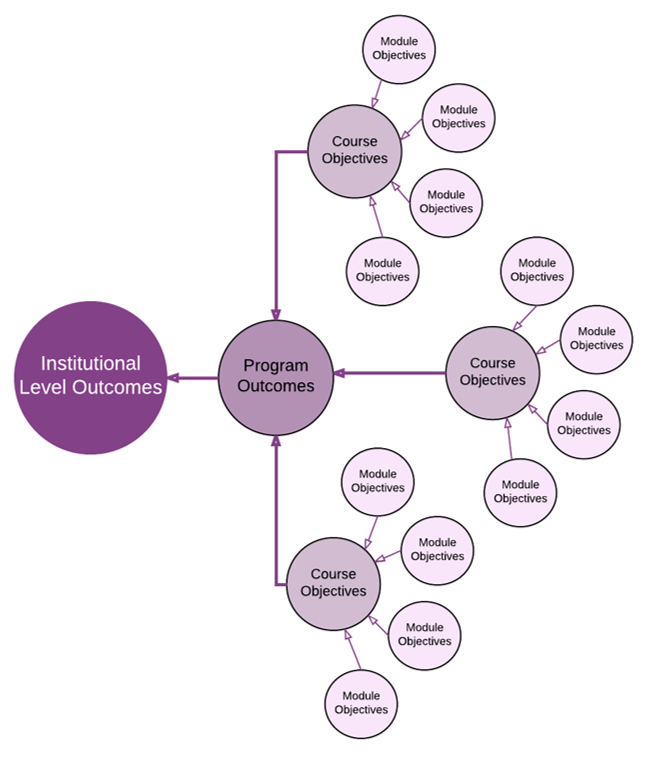Write Learning Objectives
What are Learning Objectives
Establishing learning objectives should be the starting point for your course. Your department may already have these created so be sure to check with your department chair. If these have not been developed, this section will help you understand the process of developing and writing learning objectives.
Learning objectives are statements that describe what a student will be able to do by the end of a course or unit of study. These objectives should align with your instruction, activities, and assessments. As you design your course, start with the course objectives, then build your module objectives. After all of the objectives have been created, you are ready to develop instructional materials, activities, and assessments. Proper alignment will follow this model.

Course Objectives
Course objectives will be much broader than module objectives. You should have three to five course-level IDEA outcomes. The IDEA outcomes are a good starting point for developing your more specific course objectives. Each course objective will need to be:
- Specific - Course objectives should only focus on one specific task/action required of students.
- Measurable - Student attainment of objectives should be something that can be observed and assessed in some way.
- Written from the learner’s perspective - Objectives should not be stated as topics you intend to teach, but rather what students will do with the information. The language used in the objectives should avoid discipline specific jargon.
- Matched to the course level - Course objectives in an introductory level undergraduate course should look very different from objectives for a graduate level course. Introductory courses generally focus on lower order skills such as remembering, understanding, and application while graduate courses tend to focus on analysis, evaluation, and creation.
- Aligned - Course objectives should align back to and fit within the goals and outcomes of the larger program.
Example: By the end of the course, students will be able to use critical thinking to analyze strengths and weaknesses of psychological research.
Module Objectives
A module objective is an observable skill students can combine with other skills in order to demonstrate fulfillment of a course objective. The main difference between module objectives and course objectives is scope. Course objectives are much broader in scope than module level objectives. Module objectives break down skills and knowledge into very specific, discrete skills, while course objectives point more to culminating student ability and higher level thinking skills. In a module, you may have 10 or more objectives explaining all of the tasks or skills involved in learning a concept. But in a course, you should have only about 3-5 course objectives.
In looking at the course objective noted above, an instructor might create the following module objectives.
Examples:
- Describe the steps of the scientific method.
- Define the components of a research article.
- Differentiate among research methods.
- Determine biases in a research sample.
- Evaluate ethical criteria in research studies.
The diagram below explains the relationship between college goals and outcomes, program outcomes, course objectives, and module objectives:

Canvas Tools
Canvas outcomes are helpful for defining a certain level of mastery and Canvas will provide a report of where students rank on the specified outcomes. In the video below you will get an overview of this feature. You may want to discuss with your instructional designer whether adding Outcomes would be beneficial for your course.
Additional Resources
For those who are looking for additional help, we have developed a worksheet to walk you through the process of writing learning objectives .

